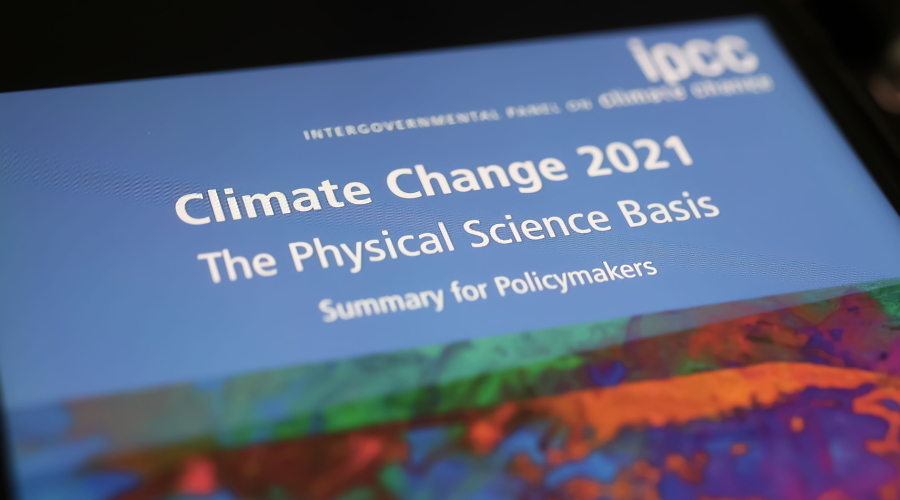
A “Summary for the Public”: Improving Accessibility of IPCC Findings for the General Public
28 July 2025
Air Pollution in Poland: a Climate and Health Emergency
1 August 2025By Safwane AISSAOUI
The IPCC is the most important organism when it comes to delivering an objective overall view of the state of climate change, its impacts and the efforts required to tackle the crisis, through the cycles process that acts as a perpetual meta-analysis of the best academic knowledge available. However, and in spite of the quality of the deliverables, the work they devise – as well as environmental issues in general – suffer from catastrophic under-representation in the media and low visibility in the public eye[i], and I would like to propose a solution to part of that problem.
Each report that is published by one of the working groups of the IPCC is divided into three main documents: the full report, the technical summary and the summary for policymakers. The latter is supposedly the most simple and accessible one, and should therefore be the prefered choice for people to share on social media, and for journalists and mainstream media to talk about the work of the IPCC. However, the SPM in itself is a dense, complicated-to-read (with terms not easily accessible to the public, such as “historical cumulative net emissions”[ii] or “tailored policies and comprehensive policies”[iii]) and technical piece of text, that requires substantial prior knowledge (and time) to be understood. This results in two phenomena : most individuals, journalists included, do not read official IPCC documents ; and the coverage of the reports must rely on secondary sources (summaries of the report, press agencies, etc.) that may distort the findings of the report or leave out certain parts. It lowers even further the exposure of the unaware population to the information, as one needs to follow specific sources to get understandable content about the report. Finally, despite their obvious advantages, the “Headline Statements from the Summary for Policymakers” are still highly unfriendly for an average reader, and heavily underused. The problem is mostly one of form, not one of substance.
To tackle that issue, I would propose that the IPCC dedicate a team to mainstream communication, which I imagine could rely on three pillars. The first would be a “15 minutes summary”, containing in simpler terms the main findings of the reports, in a nicely presented document with readable graphs and illustrations[iv]. For it to be read by a large number of people, it needs to be shorter than the SPM[v], much less technical (which proves a true challenge to remain loyal to the findings), and above all attractive to the eye. The second would be a 5-minute promotion video with proper voice cover (current IPCC videos only include text), carefully crafted audio and captivating shots – similar to the “How to Save Our Planet” video from the WWF[vi], although more focused on the specifics of the report. Such a format could strengthen the memorization of key findings for the public.[vii] Finally, the last (but least likely to be implemented) pillar would be one of proper public communication campaigns, which would mean going live on TV, on social media advertising spaces, and on physical advertising areas. Sadly, this one requires much more means than the IPCC has as of now, but there may be room for improvement here, through joint effort with countries, NGOs or civil society.
It is urgent that climate change be properly understood by everyone, and the IPCC can play an even bigger role in this field by making itself mainstream-friendly. Only then can democratic systems efficiently tackle climate change.
[i] Climate-related issues represented only 2.7% of the public debate for the presidential elections, sampled on a week of campaign in 2022, https://www.novethic.fr/actualite/environnement/climat/isr-rse/2-7-c-est-la-faible-place-accordee-par-les-medias-aux-enjeux-climatiques-dans-la-campagne-presidentielle-150593.html
[ii] IPCC, Sixth Assessment Report – Working Group 3 Contribution: Mitigation of Climate Change – Summary for Policymakers, 2022 Section B.1.3, https://report.ipcc.ch/ar6wg3/pdf/IPCC_AR6_WGIII_SummaryForPolicymakers.pdf
[iii] IPCC, Sixth Assessment Report – Working Group 3 Contribution: Mitigation of Climate Change – Summary for Policymakers, 2022 Section B.4, https://report.ipcc.ch/ar6wg3/pdf/IPCC_AR6_WGIII_SummaryForPolicymakers.pdf
[iv] Kirsh, David. Why Illustrations aid understanding. International Workshop on Dynamic Visualizations and Learning, Tubingen, Germany. 2002.
[v] Suchan J, Colucci R. An Analysis of Communication Efficiency Between High-Impact and Bureaucratic Written Communication. Management Communication Quarterly. 1989;2(4):454-484. doi:10.1177/0893318989002004002
[vi] WWF International, 2019 https://www.youtube.com/watch?v=0Puv0Pss33M
[vii] Noetel M, Griffith S, Delaney O, et al. Video Improves Learning in Higher Education: A Systematic Review. Review of Educational Research. 2021;91(2):204-236. doi:10.3102/0034654321990713


